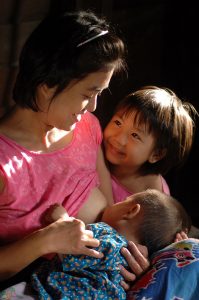
The U.S. Agency for International Development (USAID)’s flagship Maternal and Child Survival Program is looking for anyone interested in global health and development to join us for a design challenge to improve the health of women and their families around the world.
WHEN:
Thursday, October 6, 2016 at 5:00 PM – Sunday, October 9, 2016 at 3:00 PM (EDT)
WHERE:
The Biomedical Engineering Design Studio – Johns Hopkins University Clark Hall 3400 Clarks Hill , Baltimore, MD 21218
TO REGISTER:
Click here. (Note: Registration requires your commitment to attend all three days.)
Please consider registering if you fall into any of these categories:
- Students or professionals who enjoy problem-solving and applying their skills outside of their usual discipline;
- Artists, singers, playwrights, clothing designers, or other creative thinkers;
- Students, teachers, or professionals in behavior change, marketing, advertising, communication, journalism, law, policy development, advocacy, education, agriculture, or a STEM field;
- People with an interest or experience in breastfeeding, either personally or professionally – supportive spouses welcome;
- Those who have knowledge of countries in the global south.
So what is this all about?
Despite almost universal desire to delay the birth of their next child, women who have recently given birth often do not take precautions to avoid another pregnancy, . Addressing these unmet needs for postpartum family planning at scale is a global problem. Correct use of the Lactational Amenorrhea Method (LAM) of family planning is a temporary method for breastfeeding mothers who do not want to become pregnant again right away. However, it is widely underutilized.
Participants in this weekend design challenge will work in teams to develop new ideas to accelerate LAM use among women who are good candidates for it. This event will bring together “unlike minds”— people with a wide range of skills and experience — to develop new ideas to enable more women to protect themselves from a rapid repeat pregnancy.
What is LAM?
LAM is based on the suppression of fertility that occurs during breastfeeding and is effective as long as the three criteria below are met:
- The mother is breastfeeding on demand (both day and night) without any other supplemental food or liquid for the baby.
- Her menstrual cycle has not returned since childbirth.
- Her baby is less than six-months-old.
When these three criteria are met, LAM is 98% effective in preventing pregnancy and provides an important option for many mothers following childbirth. Repeat pregnancies spaced less than two years apart put a great strain on both mothers’ and children’s health.
However, women who most need family planning and could potentially use LAM are not taking advantage of it, despite decades of promotion by global health professionals. Around the world, nearly 40% of women exclusively breastfeed their infants for at least six months, yet only 0-16% use LAM. (Use varies by country.) Among women who report using LAM in surveys, only 26% practice it correctly (meeting the three criteria above). Thus, 75% of women who think they are using LAM are not protected against pregnancy.
The world needs new ideas and designs to make LAM a viable option at scale and save lives. YOU can help save lives!
